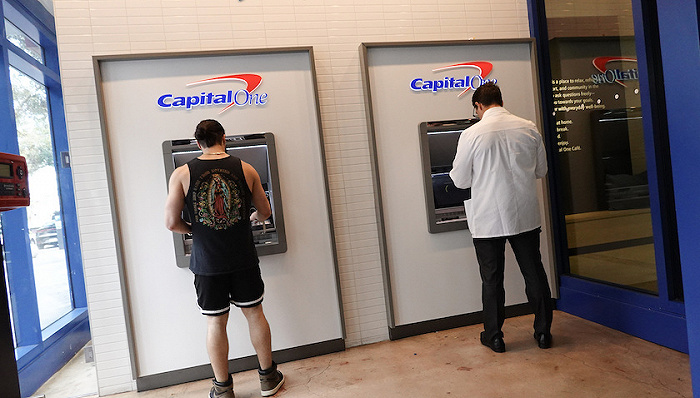“I didn’t think this was the most favorable merger situation,” said Jeremy Barnum, Chief Financial Officer of JPMorgan Chase, at a financial industry rally at UBS on February 26, 2024, casting cold water on the recent revival of the global M&A movement.
Jeremy Barnum acknowledges that there is “some momentum” and has recently seen encouraging signs, but he also points out that the overall situation is still full of provocation, from the inevitable geopolitical uncertainty to the United States’ strict anti censorship prosecution, all of which are confrontational identities.
Goldman Sachs CEO David Solomon also stated at the same rally that compared to the “very few” M&A movements in 2022 and 2023, the situation in 2024 has “deteriorated”, but he estimates it will not rise to the historical average of the past decade.
Due to high interest rates, geopolitical issues, and economic slowdown suppressing corporate business beliefs, the global M&A movement in 2023 reached its lowest level in a decade.
On February 20th, Citigroup Chief Financial Officer Mark Mason also withdrew a similar warning. He said at the Bank of America securities rally that despite a good start in 2024 and a significant reduction in business operations, the actual number of realized transactions so far is “not that high”, and there is still much uncertainty about the entire year’s M&A prospects, such as the Federal Reserve’s actions in interest rates and the regulatory standards used by the Biden administration to prosecute mergers and acquisitions.
Cornell Law School professor George Hay pointed out that the Biden administration is more stringent than the Trump administration in terms of naturalization and detention. “If I were to achieve a large-scale merger, I would compare it to after November 2024 (the US election),” he said.
According to institutional data, the global M&A movement is undergoing significant deletions and additions. According to data provider Dealogic, compared to the same period in 2023, this year’s business volume has significantly decreased. On the morning of February 27th, global mergers and acquisitions experienced a year-on-year decline of over 56%, reaching $453 billion.
And the United States is the most tedious place for mergers and acquisitions, with a deletion rate of 134%, reaching $288 billion.
Last week, Capital One Financial, a US credit card publisher, proposed to pay $35 billion to the industry’s second largest company, Discover. The first resource estimate is that if approved by the regulatory department, the business will be realized by the end of 2024 or early 2025.
However, Ian Katz, Managing Director of Capital Alpha Partners, an asset management firm, questioned whether the buyout opportunities were appropriate, thinking that business operations were “unlikely to be realized before the US election.”. He thought that if the Republican Party in Trump’s location won, the likelihood of business approval would be greater.
Some institutions are less concerned about the detention pressure from the US authorities. The PNC Financial Services Group, a regional deposit taking institution, has been calling for the company to expand its scope through mergers and acquisitions in order to gain a long-term advantage. On February 21st, Rob Reilly, the chief financial officer of the institution, made it clear that he was “not too concerned” about the resistance to the restrictions. “In the current situation, mergers and acquisitions will lose a significant degree of binding support.”
Japanese companies are launching a wave of overseas mergers and acquisitions. According to Bain Consulting Company, in 2023, the total number of Japanese corporate mergers and acquisitions reached $123 billion, a year-on-year decrease of 23%. Private equity investors, who stopped buying in 2023, also reached a historic high, surpassing other Asian countries.
According to data compiled by Bloomberg, Japan’s related M&A business has experienced a 43% decline so far in 2024.
Akira Kiyota, head of global mergers and acquisitions at Nomura Securities, believes that 2024 will be the beginning of the Japanese M&A era, and significant growth in M&A business can be seen.
The energy generated by Japanese companies in their overseas mergers and acquisitions mainly comes from the pressure of domestic authorities at the regulatory level. Bain consulted with the company and believed that Japanese companies have a large amount of cash, and both authorities and investors have put pressure on them to stop their business operations. For example, the Tokyo Stock Exchange has set thresholds for all companies, requesting them to increase their P/L ratio by at least twice, making mergers and acquisitions a top priority on the agenda of corporate executives.
In addition, Japan’s current economic situation has also gained a unique advantage in mergers and acquisitions. Low interest rates result in lower business costs compared to other regions around the world. Overall, Japanese companies have lower valuations due to their general unwillingness to sell non focus assets.
From the perspective of M&A attractiveness, the United States still ranks first.
According to the annual index released by Bayesian School of Business in London on February 23, the most attractive country for the global M&A movement in 2023 is the United States, followed by Singapore and the United Kingdom. Canada, Germany, France, South Korea, the Netherlands, Norway, and Australia also make it into the top ten.
China ranks 14th, up 2 places from 2022. India has risen 5 places and ranks 40th.
The countries with the largest decline in attractiveness over the past five years include Saudi Arabia (up 14th to 44th place), the Philippines (up 13th to 47th place), Thailand (up 12th to 29th place), and Oman (up 10th to 49th place), among others
